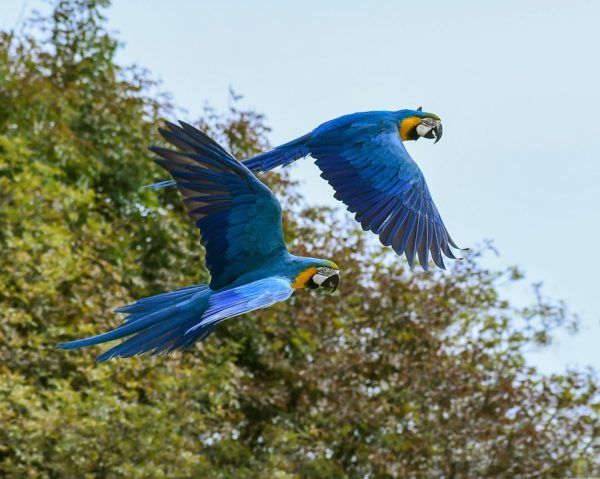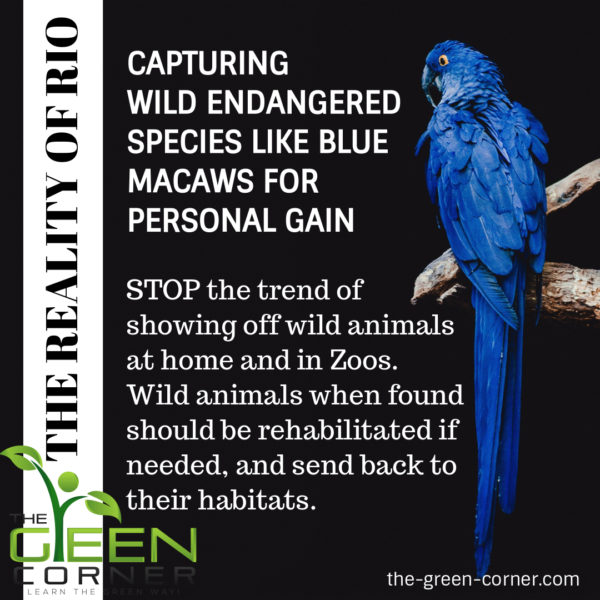The Reality of Rio
In the 3D animated movie “Rio” (2011), a Spix’s Macaw named Blu, the last living male of his species, flies all the way from Minnesota, U.S.A to Rio de Janeiro, Brazil in order to find the last living female of his species, the free-spirited Jewel. Their adventures continue in the sequel “Rio 2” (2014) when they meet a group of wild blue macaws. Like many family-friendly animated films, the movie has a happy ending.
FACING REALITY
Unfortunately, in real life, there is no happy ending for the little blue macaws. The beautiful Spix Macaw, native to Brazil, differs from its fellow species of blue macaws, being the only small blue macaw and also by the bare grey facial skin of its lores and eyerings. This species is now considered extinct in the wild, although some of the birds survive in breeding programs at several conservation organizations in Brazil.

While the vast majority of bird extinctions in recent centuries have occurred on isolated islands, five of the eight identified occurred in South America. Four of the Five happened in Brazil according to a study published in the Journal of Biological Conservation in November 2018. It is a tragic statement on the impact of deforestation in that part of the world that still continues to this day and the greed of people that capture these macaws to sell them on the black market. Most of them end up caged in suburban areas or zoos.
TAKE ACTION!
The next time you see a macaw or any exotic animal, from endangered species, in a cage, take a moment to think how it got there in the first place and simply ask. Some may have a good story (justification), while others won’t. Don’t forget to take a picture or video that will serve as evidence for reporting to authorities.
If there are no protections and regulations we can start a petition ourselves or send the evidence to organizations like Greenpeace or AmazonWatch (and many others) that are able to effectively organize masses to take action.
A collective effort is needed in order to stop the extinction of flora and fauna by starting to respect the life of all living beings. Because if we don’t it won’t take much time for us, the human race, to face extinction as well. We need to work together!
Sources
Stuart H.M. Butchart, Stephen Lowe, Rob W. Martin, Andy Symes, and James R.S. “Which bird species have gone extinct? A novel quantitative classification approach”, Journal Biological Conservation, Elsevier, November 2018.

